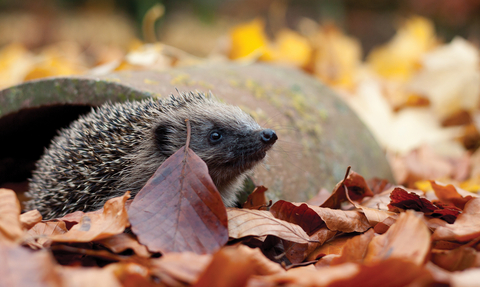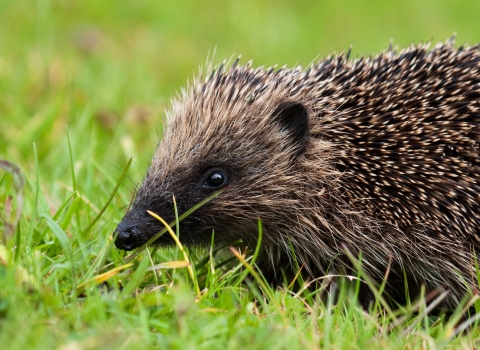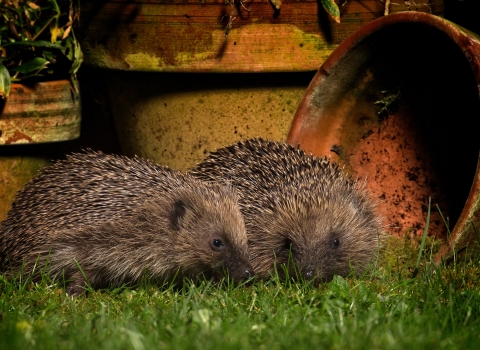Meet the UK's only spined mammal...
Have you ever heard rustling or snuffling in the undergrowth of your garden? Have you found black droppings on the lawn, or noticed that your path is covered in small, shiny cases? Congratulations - sounds like you have a visiting hedgehog!
Voted Britain's favourite mammal, hedgehogs are little spiky creatures that capture our hearts and our imaginations. They need plentiful food and a connected landscape to travel through on their night time forays. They thrive in communities with gardens that are accessible and welcoming, with holes cut in fences, log piles for daytime shelter and lots of insects and worms to snuffle up.
Discover more about hedgehogs and how you can help them below!
Helping injured or poorly hedgehogs
You usually see hedgehogs snuffling about in the evenings and overnight. You can help them to build up their fat reserves by leaving out some meaty kitten biscuits (or hedgehog biscuits) and a saucer of water.
If you spot a lethargic hedgehog out in broad daylight, they need some help. Other things to look out for are any obvious wounds or injuries, hedgehogs that are walking in a wobbly way, or if hoglets or very small hedgehogs are out in the day without an adult nearby.
The best thing to do in this case is to provide food and water as above, and contact your local hedgehog rescue for more advice.
❌ Don't use slug pellets in your garden - they can poison hedgehogs!
❌ Don't leave milk out for hedgehogs to drink, they are lactose intolerant.
❌ Only feed hedgehogs meaty cat or dog food or cat biscuits and water. Mealworms, raisins and other food can cause lots of illnesses or even be fatal.
Did you know?
- Their snuffling and grunting sounds, and their habit of building nests under hedgerows, gave rise to their common name. They're incredibly noisy eaters!
- Hedgehogs have very poor eyesight but extremely good hearing.
- In Old English, hedgehogs were called 'urchins'. This eventually gave the name to another prickly animal that lives in the ocean - sea urchins.
- A male hedgehog is known as a boar, the female a sow, and baby hedgehogs are called hoglets!

(c) Tom Marshall
A night-time visitor that gardeners adore!
When did you last see a hedgehog?
Shockingly, around a third of the British hedgehog population has been lost since the millennium, marking them as a species of highest conservation concern. Since 2000, around a third of urban hedgehogs and a devastating half of rural hedgehogs have been lost.
In the last 70 years agriculture has intensified leading to fewer hedgerows, and the use of pesticides has soared which has had a devastating effect on insect numbers, the main food-source for wildlife like hedgehogs.

We need a Yorkshire that makes room for hedgehogs
We create landscapes which create and join up more wild places where hedgehogs can still find food and shelter. These wildlife corridors connect with our own nature reserves to form a network where wildlife truly can recover.
Our teams inspire thousands every year, from our tiny forest tots to experienced naturalists. By connecting people with their local wildlife we also help its recovery. We empower the people of Yorkshire to help their local wildlife, such as hedgehogs, in their gardens, local green spaces and within their communities.
Finally, we help policy makers understand the solutions that wildlife desperately needs to recover all across Yorkshire.
Discover more about hedgehogs...
Rosie chats about why hedgehogs are such amazing little creatures, and how we can all work together to help them.

